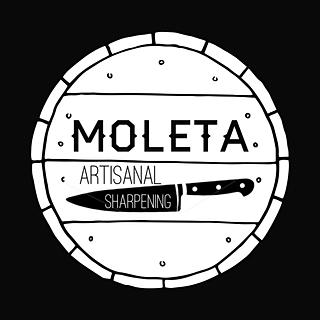Knife Advice: What to look for when buying a kitchen knife
- moletausa
- Feb 8, 2022
- 3 min read
Updated: Oct 18, 2023
Of course there are expensive and inexpensive knives, but lets talk about the features of any kitchen knife that you can look for at any price range. How a knife is shaped and design can have major implications for how long the blade will last over a lifetime of many sharpenings. These are of course personal opinions from a sharpeners perspective. These is no right or wrong knife as long as it’s made of decent steel and has a great edge. Many people like some of these features as part of their blade. The answer for you will be very much in how you intend on using your blade as to whether the advantages of any one feature outweighs its disadvantages.

No Bolster.
Often a feature of Western style blades, a bolster is meant to strengthen the integrity of the blade and to give some space between your fingers and the back corner of the steel. A blade will maintain its shape much more seamlessly as steel is removed.
For the average cook this feature is unnecessary. If the integrity of a blade is threatened enough to need a bolster, we suggest switching to a larger knife. As for keeping your fingers away from the blade; it sounds like a bolster is making a knife safer to use, but a knife should be taken in for maintenance if its slipping. Our main tenant of safe knife use is that a blade should not be forced, but maneuvered. If it’s not doing its job with ease it’s either the wrong knife or needs a new edge.
If there is a danger of slipping, don’t rely on a bolster to
protect you. More disabling hand injuries are caused by dull knives than any other hand tool. Please, don't force your blades.
There are many knives that don't have bolster these days both Western and Japanese. Even certain lines of Chicago Cutlery went with a no-bolster style. If you really love a bolster on your blade, consider looking for one that is slanted instead of the traditional. We most often see the slanted bolster on certain lines of Wustoff knives.
Cheap Damascus
In general if you’re getting a deal that seems too good to be true on Damascus, it probably is. Improperly done, Damascus blades tend to have a lumpiness along them and well as inconsistent texture in the hardness of steel. Not only will they be incredibly difficult to sharpen evenly, they also will not maintain an edge very well. While a stainless steel blade of the same price will get you much more cut for your buck.
Ceramic blades
Anything that claims it never needs to be sharpened is only true if you never use it. That is true of any type of serration as well as ceramic knives. Not only do ceramic need to be sharpened, but the results are often lacking. Most people end up throwing these away when they break or chip while a steel blade in the same condition would have been working many more years with a five minute trip to Moleta.
Full Tang
The tang is the metal from your knife that runs through the handle of your blade and is directly proportional to the amount of pressure you can apply. A tang that runs the full length of the handle is usually visible between the scales (the two pieces that make up the handle - usually wood or acrylic). Handles that don't show the tang usually only go partially into the handle and not down the full length. Partial tangs are more likely to bend and break handles plus are more expensive and difficult to repair with a new handle should you need one. If you buy knives with a full tang they are less likely to break and easier to repair the scales should they need to be replaced.
And remember, the two best things you can do for the environment are to either buy high quality or second hand and take care of it. If you’re not looking to spend over $50 on a new knife, we highly recommend shopping second hand. You never know what you might find and now that you know us, you know you can get that blade in better than new condition at reasonable price even if it's broken in half.

Alena has been sharpening over a decade professionally. From farm to law firm, she found the perfect balance of power tools, art, and analytics in Moleta. She loves to garden, cook, craft and still gets excited for people to try their blades for the first time after she gets done with them.




Comments